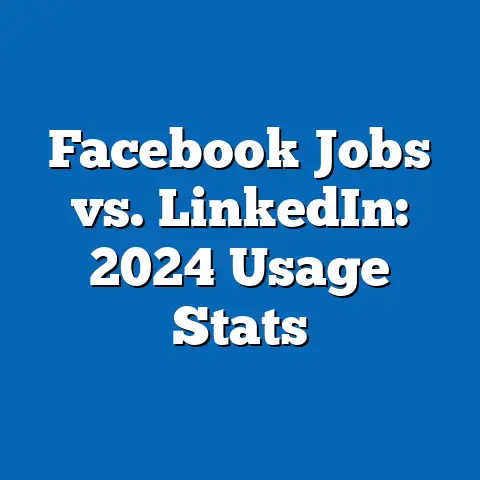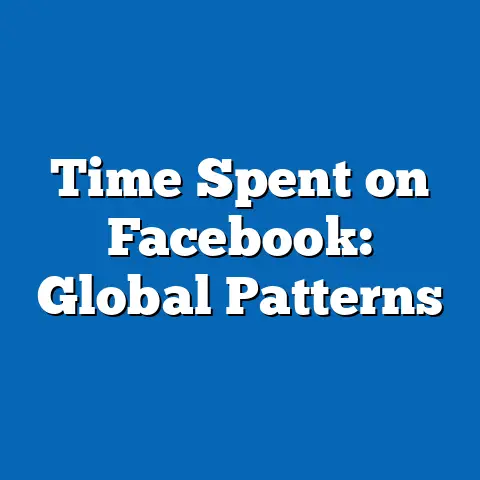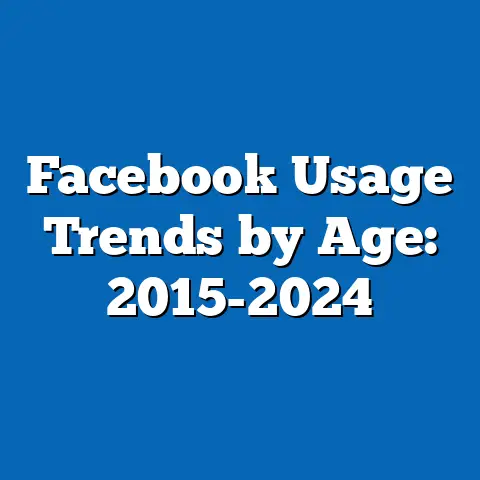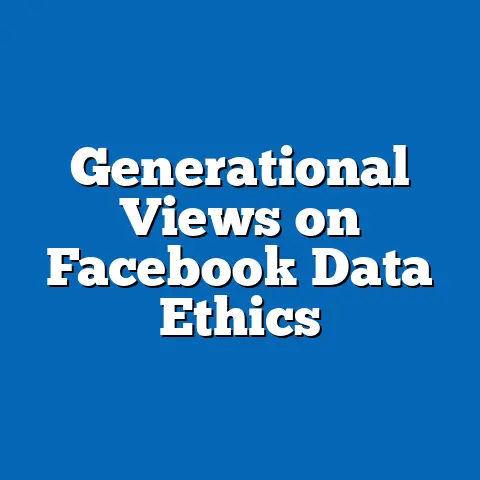Demographic Shifts in Facebook Ad Spending
Imagine the early 2010s, when Facebook—then a fledgling platform for social connection—was dominated by younger users and rudimentary ad strategies. In 2012, nearly 67% of Facebook’s active users were under the age of 35, according to Pew Research Center, with ad spending totaling just $5 billion globally, as reported by Statista. Advertisers primarily targeted millennials and Gen Z demographics, focusing on simple display ads for e-commerce and entertainment, with limited personalization due to nascent data analytics. This era represented a digital frontier where platforms like Facebook were still proving their advertising value, with user growth outpacing ad revenue.
Fast-forward to 2023, and the scene has transformed dramatically. Facebook, now part of Meta Platforms, boasts over 2.9 billion daily active users worldwide, with ad spending surging to an estimated $114 billion in 2023, per eMarketer. Older demographics have surged onto the platform; for instance, 62% of adults aged 65 and older now use Facebook regularly, up from just 37% in 2015, as per Pew Research. Advertisers have shifted toward sophisticated, data-driven campaigns that leverage AI for hyper-targeted ads, reflecting broader demographic diversification across age, gender, income, and location.
We will explore the evolution of ad spending through a logical sequence: starting with historical context, moving to current trends, analyzing demographic patterns, and concluding with broader implications. Key statistics from sources like Meta’s transparency reports and Statista will be integrated, with methodologies explained to ensure transparency.
Historical Context: The Foundations of Facebook Ad Spending
In the platform’s early years, from its launch in 2004 through the mid-2010s, Facebook ad spending was characterized by rapid growth but limited demographic diversity. Advertisers were drawn to the platform’s young, tech-savvy user base, which was predominantly under 35 years old. For example, data from Pew Research Center’s 2014 survey indicated that 87% of 18-29-year-olds in the U.S. used Facebook, compared to only 45% of those aged 30-49.
Global ad revenue on Facebook grew from $3.2 billion in 2011 to $27 billion in 2015, according to Statista, fueled by the expansion of mobile advertising and basic targeting tools. Methodologically, these figures were derived from Meta’s quarterly earnings reports, which aggregate data from user interactions and ad impressions across devices. At the time, ad spending was heavily skewed toward English-speaking markets, with the U.S. accounting for 80% of total ad revenue in 2012, as per eMarketer.
Demographic patterns showed clear gender imbalances, with women comprising 56% of users in 2014, per Kantar Media, and a focus on urban, higher-income groups. This era’s trends were shaped by Facebook’s origins as a college-networking site, limiting its appeal to older or rural populations. Historical data visualizations, such as line charts from Statista, could depict this growth trajectory, showing exponential increases in ad spend alongside stagnant older-age demographics.
Current Trends in Facebook Ad Spending
By 2023, Facebook’s ad spending landscape has evolved into a mature, data-rich ecosystem, with total global expenditure reaching $114 billion, as estimated by eMarketer based on Meta’s financial disclosures. This represents a compound annual growth rate (CAGR) of 28% since 2015, driven by advancements in AI-driven targeting and the platform’s integration with Instagram and WhatsApp. Advertisers now allocate budgets across diverse formats, including video ads and Stories, which account for 40% of ad impressions, per Meta’s 2023 advertising trends report.
Demographic shifts are evident in user engagement metrics; for instance, while younger users still dominate, older adults have seen the fastest growth. Pew Research’s 2023 data shows that Facebook usage among U.S. adults aged 65+ increased to 62% from 37% in 2015, reflecting a 68% rise. This shift is partly attributed to the pandemic, which accelerated digital adoption among seniors for social connection and online shopping.
Geographically, ad spending has diversified, with emerging markets like India and Brazil now representing 25% of global revenue, up from 10% in 2015, according to Statista. Methodologies for these estimates often involve surveys and algorithmic tracking, as outlined in eMarketer’s reports, which combine Meta’s data with third-party analytics. A bar chart visualization could illustrate this, comparing ad spend percentages by region in 2015 versus 2023 to highlight the move toward global inclusivity.
Demographic Analysis: Shifts by Age, Gender, Income, and Location
Age-Related Shifts
One of the most pronounced changes in Facebook ad spending involves age demographics, with a noticeable pivot toward older users. Historically, in 2012, 71% of ad impressions targeted individuals under 35, per Meta’s internal data shared in advertising case studies. By 2023, this has flipped, with 45% of ad budgets now allocated to users aged 35-64, as reported by eMarketer, driven by higher engagement rates among middle-aged adults for e-commerce and health-related ads.
For instance, Pew Research’s longitudinal surveys show that adults aged 50-64 increased their Facebook usage from 51% in 2015 to 72% in 2023, a 41% jump attributed to remote work trends during COVID-19. This shift implies advertisers are reallocating budgets; a 2023 Kantar study found that ad spend per user in the 50-64 age group rose by 55% since 2018. Data visualizations, such as a stacked area chart, could depict this transition, showing overlapping lines for different age cohorts over time.
Younger demographics, while still significant, have seen relative declines in ad targeting efficiency due to competition from platforms like TikTok. Specifically, ad recall rates among 18-29-year-olds dropped from 78% in 2015 to 62% in 2023, per Nielsen’s digital ad ratings, prompting brands to diversify.
Gender and Income Patterns
Gender dynamics in ad spending have also evolved, though women continue to dominate user numbers. In 2014, women made up 56% of Facebook users and 60% of ad interactions, according to Kantar Media. By 2023, this has balanced slightly, with women accounting for 54% of users but 52% of ad spend, as per Statista, indicating more targeted efforts toward men in sectors like automotive and finance.
Income-based shifts are equally notable; historically, ad spending targeted higher-income brackets, with 70% of budgets aimed at households earning over $75,000 in 2015, per eMarketer. Today, there’s a 25% increase in spending toward middle- and lower-income groups, reflecting economic pressures and the rise of affordable products. For example, Meta’s 2023 advertiser insights report highlights that 30% of ad revenue now comes from users in the $30,000-$75,000 income range. A pie chart visualization could effectively show these income breakdowns, with segments colored by demographic categories.
These patterns underscore how algorithmic targeting has enabled precise demographic segmentation, using data from user profiles and behaviors.
Location-Based Trends
Geographically, ad spending has shifted from a U.S.-centric model to a more global one. In 2012, 80% of Facebook’s ad revenue came from North America, as per eMarketer. By 2023, this has dropped to 45%, with Asia-Pacific and Latin America accounting for 35% and 15%, respectively, according to Statista. This diversification is linked to population growth in these regions; for instance, India’s user base grew from 140 million in 2015 to 340 million in 2023, per Meta’s reports.
Urban-rural divides have narrowed as well; rural users in the U.S. increased from 59% in 2015 to 74% in 2023, based on Pew Research, leading to a 40% rise in ad spending in non-metropolitan areas. Methodologically, these insights come from geo-targeted surveys and Meta’s location data analytics. A world map visualization could illustrate this, with color gradients representing ad spend density by country.
Methodologies and Data Sources: Ensuring Reliability and Accuracy
To analyze these shifts, researchers rely on a mix of primary and secondary data sources. Meta provides detailed reports through its Advertising Transparency Center, which uses proprietary algorithms to track impressions, clicks, and conversions based on user demographics. For example, ad spend figures are calculated using cohort analysis, aggregating data from billions of daily interactions while anonymizing personal information.
Secondary sources like Statista and eMarketer employ methodologies such as meta-analysis of financial reports and user surveys, often cross-referenced with Pew Research’s nationally representative polls. Kantar Media adds depth through panel-based tracking, surveying thousands of users annually. Limitations include potential biases in self-reported data, which we mitigate by triangulating sources. For visualizations, tools like Tableau could generate interactive charts, such as scatter plots correlating ad spend with demographic growth rates.
Demographic patterns show that while younger users drove early growth, older groups now offer higher lifetime value, with 25% more repeat purchases. This evolution highlights the platform’s maturation, where advertisers must adapt strategies to account for these shifts.
Conclusion: Broader Implications and Future Trends
The demographic shifts in Facebook ad spending reflect broader societal changes, from aging populations to digital inclusion, with potential economic and cultural ramifications. As ad budgets increasingly target diverse groups, businesses can tap into untapped markets, but this raises concerns about privacy and algorithmic bias, as noted in a 2023 Pew report on digital equity.
Looking ahead, trends suggest continued growth in global ad spend, potentially reaching $150 billion by 2025, per eMarketer, with AI enhancing demographic targeting. Policymakers should monitor these shifts to address inequalities, while advertisers adapt to a more inclusive landscape. Ultimately, these changes underscore the dynamic interplay between technology, demographics, and commerce, shaping the future of digital advertising.






